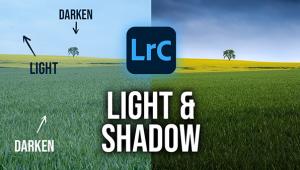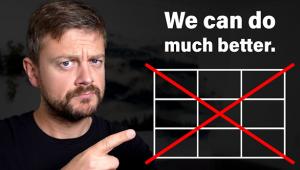Business Trends
Setting The Right Price; Rules Of The Negotiation Road
Whether you have been in business two years or 20, it can still be discomforting and difficult to discuss pricing if you don't know what to say and when to say it. Getting paid what you want is all about what you do and say at the beginning of a client relationship. It is very hard to try and change later. To get paid what you want you will need a clear and concrete strategy. Here are some techniques to review, renew, or learn for the first time.
Pricing Rules To Live By
· Remove the "you" from the picture when price comes up. Talk
about what "the photography project" will cost, not what "you"
charge. No matter what the project is, making pricing too personal reduces your
objectivity and ability to negotiate.
· Use industry standard forms with legally accepted terms and conditions
and know your industry business practices and standards. Don't reinvent
the wheel to generate an estimate form when dozens of professional associations
have already designed the forms to protect you. Look to the American Society
of Media Photographers (www.asmp.org),
Professional Photographers of America (www.ppa.com),
and National Press Photographers Association (www.nppa.org).
On most websites that offer this type of assistance, use the search box for
"forms." Some require membership in the association for access to
this material, but it is well worth it!
· Find out who is really in charge and if that person has both the responsibility
and the authority to hire you. Learn the negotiating considerations below and
use them wisely. Put everything in writing, including the benefits of working
with you. To get your price, learn to package your price.
· Don't quote prices off the top of your head! It's very,
very rare that a fair price can be determined before the project scope is fully
described and understood. Plan on calling the client back after you have some
time to think it through. This is most important when you don't know the
client or don't know if you have the job for certain.
· Get complete and detailed project information. How many setups? How
many views in each setup? How many variations on each view in each setup? Don't
wait until you are at the photo shoot for these variables to come up (and they
will). Be prepared from the inception of the project. Get all the information
you need up front as you may need it later to negotiate.
· Prepare a verbal presentation of your pricing in advance so that you
can handle any response. For example, when you ask your client, "What
you described will cost $5000, how does that fit your budget?" the client
will respond positively or negatively. If they respond positively, then you
go to the packaging your price step. If they are negative about your price,
then you go to the considerations to negotiate step.
Considerations To Negotiate
Usually your regular clients do not need all of this effort, but if you don't
know the client or if you don't have the job, be prepared to negotiate.
When you quote a price, what do you do when the client wants to pay less? Answer:
you walk away--or you negotiate. When the client names a price lower than
what is acceptable to you, your answer can be, "Let's take a look
at how it can be done for that price."
For the client to pay less than your quoted price the client will get less of
some aspect of the project description or you will get more of something valuable
to your business. Your job now is to put together two lists in advance of your
next pricing discussion. First is a list of the considerations the client can
make to lower the price. For example, they can get less usage rights, fewer
personal consultations, smaller quantity of views or prints. Make a list of
anything you can think of that will help the client pay less without damaging
the project.
Second is a list of considerations where you can get more of something so the
client can lower the price. For example, you can get more time, more printed
samples, or better payment terms.
The bottom line is you do not have to accept less money for the same amount
of work. You will damage your chance at a profitable relationship with clients.
You will give your work away. Don't do it. Instead, look for the win-win.
Learn successful negotiating techniques to get the best return on your creativity
and your business.
Packaging Your Price
When you and your client have a price you both agree on, or when you want to
gain a marketing edge over your competition, you'll find that a good presentation
of the price can be the difference between getting the job or not. Whether you
are doing consumer or commercial photography, an irresistible presentation of
your price will better demonstrate your professionalism, value, expertise, and
abilities. This will help the client decide to hire you instead of a competitor.
In addition, a beautifully prepared proposal demonstrates to the client the
extra value they will get for the price they will pay. It also shows the attention
to detail you will apply to their job.
Also, in commercial photography, the person you call the "client"
probably has to get the proposal approved and needs something to show around
in committee to help you get the job. After all, the estimate confirmation just
tells them what it would cost to hire you, but the packaging tells them why
it is such a good idea!
- Log in or register to post comments
















































